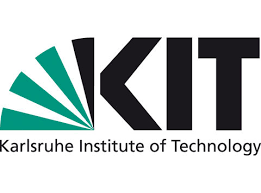Karlsruhe Institute of Technology: Climate change and changes in land use favor flood events
The German federal government estimates the total damage from the devastating floods in July 2021 to be around 32 billion euros. In two studies, researchers at the Karlsruhe Institute of Technology (KIT) investigated how precipitation, evaporation processes, water body and runoff behavior favored this flood. In order to be better prepared for such extreme events in the future, they advise taking greater account of the landscape and river courses, their changes and sediment transport in risk assessments. Future projections also show an increasing spatial extent and frequency of such extreme events as well as increased amounts of precipitation.
The floods in July 2021 are among the five worst and most expensive natural disasters in Europe in the last 50 years. More than 180 people lost their lives and well over 10,000 buildings were damaged. Critical infrastructure such as electricity and water supply networks, bridges, railway lines and roads were partially or completely destroyed. The overall extent of the flooding on July 14 and 15, 2021 in the Eifel was also surprising for experts. This catastrophe was caused by a combination of several factors: “We investigated how precipitation, evaporation processes and water and runoff behavior favored this flood,” says Dr. Susanna Mohr, Managing Director of the Center for Disaster Management and Risk Reduction Technology (CEDIM) at KIT,
Bed load increased the spread and effects of the flooding on the Ahr
On the Ahr, the estimated water discharge volume in 2021 was of a similar order of magnitude to the historical flood events of 1804 and 1910. Nevertheless, the water levels in 2021 were significantly higher in several places. “We have seen that the type of bed load – i.e. material that is carried along by a river – has changed significantly. In addition to the removal of sediment and existing deadwood, the anthropogenic, i.e. man-made, influence has played a significant role,” says Mohr. “For example, vehicles, caravans, garbage cans or building materials have accumulated in bridge areas, which has led to additional bottlenecks and further exacerbated the effects of the flood.” In order to be better prepared for such events in the future, it is necessary in flood risk management to
Amount of precipitation not unique
The researchers also compared the precipitation event of July 2021 with historical precipitation records: “Our analyzes show that the observed total precipitation is among the highest in Germany in the last 70 years – and was therefore extreme, but not unique,” says Dr. Florian Ehmele from the Institute for Meteorology and Climate Research – Department Tropospheric Research (IMK-TRO). “The precipitation events that led to the severe floods in Berlin and Brandenburg in 1978 or on the Elbe in 2002, for example, were significantly stronger in terms of their precipitation intensity as well as their extent or lifespan.” However, past precipitation events are comparable to those in July 2021 are,
Simulations show that climate change will intensify future flood events
In addition, the KIT researchers simulated the flood event under different climatic boundary conditions. “The intensity of such precipitation events increases by around seven percent for every degree of warming. The simulations show that the amount of precipitation has already increased by eleven percent compared to pre-industrial conditions,” says Dr. Patrick Ludwig, head of the “Regional Climate Modeling” working group at IMK-TRO. “As global warming progresses, we must therefore assume that precipitation will increase further.” But that is not the only problem in the future: “According to our future projections, such extreme events will also spread both spatially and temporally and their frequency will increase,” predicts Ludwig .
Risk competence of the population must be improved
According to the researchers, the severe flooding in July 2021 showed how important it is to be prepared for such events and to react appropriately. In order to increase resilience, i.e. resistance in the event of catastrophes, and thus reduce damage and the number of victims, it is therefore necessary to take into account the vulnerability of systems and social aspects in addition to the risk potential. An essential component of resilience is the risk competence of the population, i.e. the knowledge of appropriate and quick options for action in the event of a disaster.
Center for Disaster Management and Risk Reduction Technology (CEDIM)
The CEDIM, an interdisciplinary facility of KIT, conducts research on disasters, risks, and security. The aim is to better understand natural and man-made risks in a rapidly changing world characterized by population growth, urbanization and climate change, to identify them earlier and to better manage them. To this end, the researchers combine risk assessment, risk analysis, risk management and risk communication and, based on this, develop concepts for improving the resilience of infrastructure and supply.

